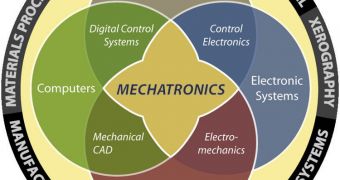A team of experts at the University of California in Berkeley (UCB) have been working for the past couple of years on developing an automated exoskeleton, to be used by paralyzed individuals to walk.
The machine will be introduced to the public for the first time tomorrow, when graduating senior Austin Whitney will raise up of his wheelchair, and walk on the podium at the UCB Commencement,
Chancellor Robert Birgeneau will be there to shake his hand and hand over his diploma. Whitney was disable about four years ago, when a violent car crash severed his spinal cord, leaving him paralyzed from the waist down .
But now, thanks to advancements in technology, and due to the innovations made at UCB, he will be able to wear an exoskeleton to the graduation. The robotic ensemble looks like souped up braces, but they enable the wearer to stand up straight and take a few steps.
“Ask anybody in a wheelchair; ask what it would mean to once again stand and shake someone’s hand while facing them at eye level. It will be surreal, like a dream,” Whitney, 22, explains.
The exoskeleton project is led by UCB professor of mechanical engineering Homayoon Kazerooni. He and his graduate student team named the first prototype Austin, in honor of Whitney, its first pilor.
Kazerooni is the head of the Robotics and Human Engineering Laboratory at the university, and graduates Michael McKinley, Jason Reid, Wayne Tung and Minerva Pillai are all PhD students there.
“In the beginning, we hadn’t realized how important Austin’s role would be. The feedback he provides – from the comfort level of straps to the ease of control – has really helped us fine tune the design of this machine,” Reid explains.
Kazerooni and his team have been developing exoskeletons, with varying degrees of success, for more than 10 years. At first, the experts worked with the Pentagon's US Defense Advanced Research Projects Agency (DARPA).
“What distinguishes the Austin exoskeleton from the others out there is its simplicity for unsupervised in-home use and its lower cost. We made the conscious decision to only focus on key functions to keep the cost down,” the UCB professor explains.
“Users won’t be able to walk backward or climb ladders with the Austin exoskeleton, but what we sacrifice in capability, we gain in accessibility and affordability,” he goes on to say.
“Just getting people to be upright and take steps forward is already a huge advance in increasing independence,” Kazerooni argues. He reveals that existing exoskeletons now cost around $100,000.
“The streamlined Austin exoskeleton is still in the early stages of research and is not yet connected to a company for development, but I do not see any real obstacle to bringing Austin exoskeletons to market at a price comparable to some motorized wheelchairs,” he concludes.

 14 DAY TRIAL //
14 DAY TRIAL //